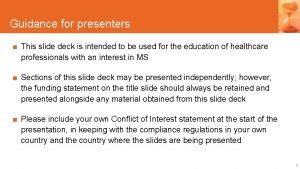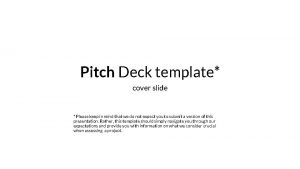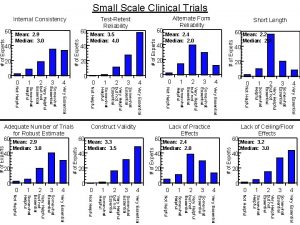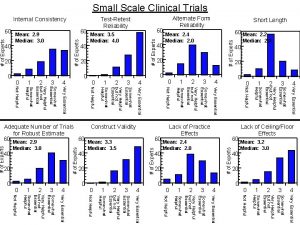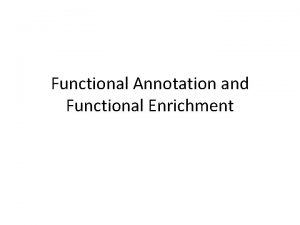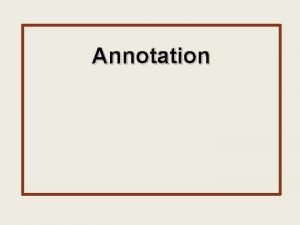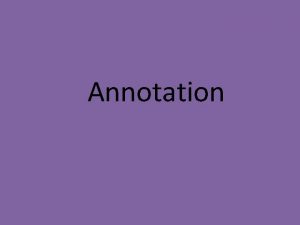Annotation Guidance This slide deck contains helpful tips








- Slides: 8

Annotation Guidance This slide deck contains helpful tips regarding the annotation of fiction texts. Please also refer to the link below from College Board: “How and Why to Annotate a Book” for tips on fiction and non-fiction texts. http: //apcentral. collegeboard. com/apc/public/courses/ teachers_corner/197454. html Start thinking about annotation with a purpose for reading. What is your purpose for reading this text? What annotation strategies will help you?

Identify What to Annotate Identify words you do not know and look them up. Write down questions you have as you read. Track characters’ physical and emotional development throughout the text. Identify symbols and other techniques/devices. Identify universal statements/messages (themes) and track their development. Identify cultural values. Track patterns/repetitive subjects because… Patterns or motifs (big ideas) often = themes Find quotes to support themes

So now what? Just having words noted/underlined/highlighted does not really help you analyze the text and is not considered annotating. Annotating helps you engage with the text, but you may also have to find information quickly (in-class essays and discussions), so you have to do more than just highlight for annotation to be of benefit.

Organize Your Annotations Create a labeling system to use while annotating. Label your annotations CONSISTENTLY. Use a key/ legend. Examples T= Theme S = Symbol CD = Character Development C = Conflict You could color code with pens, highlighters, post-its, or tabs.

So now what? You have identified and organized, congratulations! Can you critically think about that information, write critically about it, and finish a written response in a timed setting? Being specific and critically thinking about how your annotations fit together ahead of time will save you time and stress.

Example from To Kill a Mockingbird Atticus shares a life lesson with Scout: it’s a sin to kill a mockingbird. You may have annotated for: T =Theme S = Symbol This note alone is not going to help you remember your critical thoughts! Include a note in the margin about theme, about the symbol, critical thoughts about how the author presents and uses these elements in the text.

Sample Annotated Text: Underlined and bracketed text selections Connections to developing theme Questions Color coding

Sample Annotated Text: Sticky notes Color-coded sticky notes and tabs Notes in separate notebook This is a great option if you can’t write in the book!






